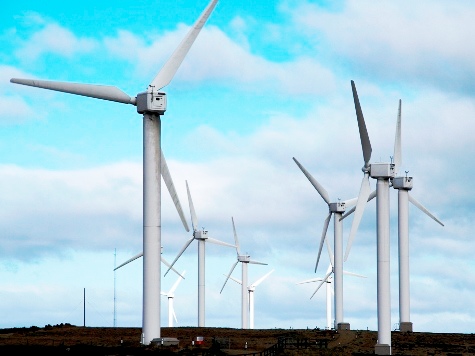The Scottish government has commissioned a report into the health effects of wind farms at 10 sites across the country, following concerns that many people may be suffering from the effects of infrasound emitted from the turbines.
The Sunday Express reports that campaigners are concerned that the low frequency sounds produced may be causing people living nearby to suffer headaches, nausea, insomnia, dizziness and raised blood pressure.
Andrew Vivers, a former Army captain, said that he has suffered from various symptoms since the Ark Hill wind farm was built near his home in Glamis, Angus. Authorities have so far failed to accept the effects infrasound has on health, he says, despite it being a “known military interrogation aid and weapon”.
“When white noise was disallowed they went on to infrasound. If it is directed at you, you can feel your brain or your body vibrating,” he explained. “With wind turbines, you don’t realise that is what’s happening to you.”
“It is bonkers that infrasound low frequency noise monitoring is not included in any environmental assessments. It should be mandatory before and after turbine erection.”
Explaining the effects the turbines have had on his own health, Mr Vivers added: “I was getting these headaches and dizziness and just not sleeping, but I was putting it all down to all sorts of other things. A couple of times I was walking on the hills around the house with my dogs and got a really bad dizzy spell.
“I actually had to sit down for a few minutes and while I was sitting down wondering what on earth was wrong with me, I did notice the wind was coming straight from the turbines.”
He added that he has also seen an “incredible number” of dead hares on the surrounding moors and believes they have suffered “internal haemorrhaging and death” due to the turbines.
“If this coming winter is going to be anything like the last and with the plans to build a second wind farm much closer to us, I think we’ll have to sell our home and move elsewhere,” he said.
The Scottish government is sending around 2,000 questionnaires to residents living selected wind farms. The survey is being managed by ClimateXChange, who have published information online.
They say: “The Scottish Government has asked ClimateXChange to manage a research project looking at whether the impacts predicted by developers in documentation submitted with their planning applications are consistent with the impacts experienced once the wind farm is operating.
“The study will examine ten onshore wind farm developments across Scotland, measuring their operational impacts through a combination of field assessments and local resident surveys.
“The project will inform the Scottish Government on the need for guidance to developers of wind farms on how they should measure the potential impacts of their wind farms, and how they should communicate this to planning authorities and those likely to be affected.”
However, Susan Croswaithe of campaign group European Platform Against Windfarms told the Sunday Express that study will be “little more than a box ticking exercise.”
“On the face of it, it does look like a step in the right direction, but can we really trust it? My issue is that it is not independent enough.
“Our website is full of examples of people not being listened to.
“We have two very large wind farms near us in Ayrshire, Arecleoch and Mark Hill – 60 turbines and 28 turbines.
“If people in my area have noticed they are feeling better at the moment but do not understand why, it may be because the turbines have been switched off while they do maintenance on the grid.”

COMMENTS
Please let us know if you're having issues with commenting.